Inbound
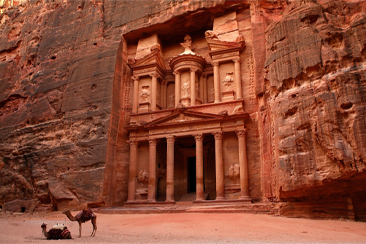
Petra
The city of Petra, capital of the Nabataean Arabs, is one of the most famous archaeological sites in the world, it is Located 240 km south of the capital Amman and 120 km north of the red sea town of Aqaba (see the Map), Petra the world wonder, is undoubtedly Jordan’s most valuable treasure and greatest tourist attraction, and it is visited by tourists from all over the world.
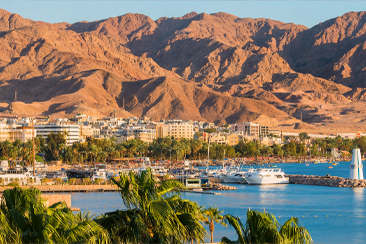
Aqaba
The city of Aqaba is a coastal gem in Jordan, known for its golden sandy beaches and crystal-clear blue waters. It is a haven for diving enthusiasts and water sports, offering a unique experience to explore its rich marine life. Additionally, Aqaba boasts diverse tourist facilities, including delicious restaurants and luxurious resorts, providing opportunities for shopping, and exploring local historical sites.
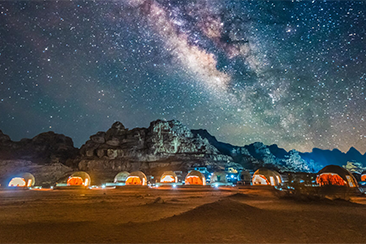
Wadi Rum
The Valley of the Moon”, depicted as Mars in several Hollywood feature films Wadi Rum is an Arabian fairy-tale waiting to be discovered. Home to nomadic Bedouin tribes, Wadi Rum is a a quiet getaway of stars, sand, and sun; a perfect complement from Amman’s epicenter. Once inhabited by the Nabataeans of prehistoric times, Wadi Rum allows you to get lost in large landscapes and horizon lines.
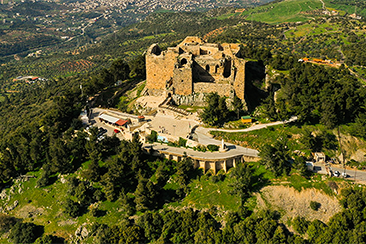
Teleferic Ajloun
The Ajloun cable car is a great way to explore the scenic natural beauty of the region. Visitors have a unique opportunity to enjoy a fun trip and see stunning views of the city of Ajloun and its picturesque mountains from heights of hundreds of metres. The panoramic view offered by the Ajloun cable car gives a unique sense of charm and natural beauty to the city and its surrounding area.
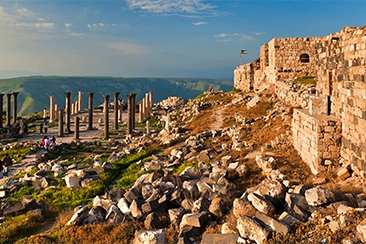
Umm Qais
Umm Qais is a stunning archaeological city located in the northwest of Jordan, known for its magnificent Roman and Byzantine ruins. The city includes massive theaters, ancient temples, and main streets, and is distinguished by breathtaking views overlooking the plains of Jordan and the Galilee in Palestine. Umm Qais combines natural beauty with rich history, making it a unique and distinctive tourist destination in the region.
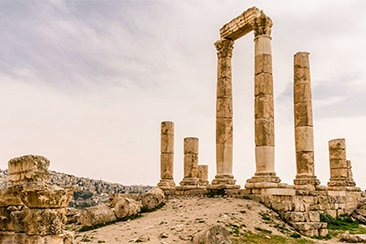
Amman City Tours
Amman, the capital of Jordan, is a fascinating city of contrasts – a unique blend of old and new, situated on a hilly area between the desert and the fertile Jordan Valley. In the commercial heart of the city, ultra-modern buildings, hotels, restaurants, art galleries and boutiques rub shoulders comfortably with traditional coffee shops and tiny artisan workshops.
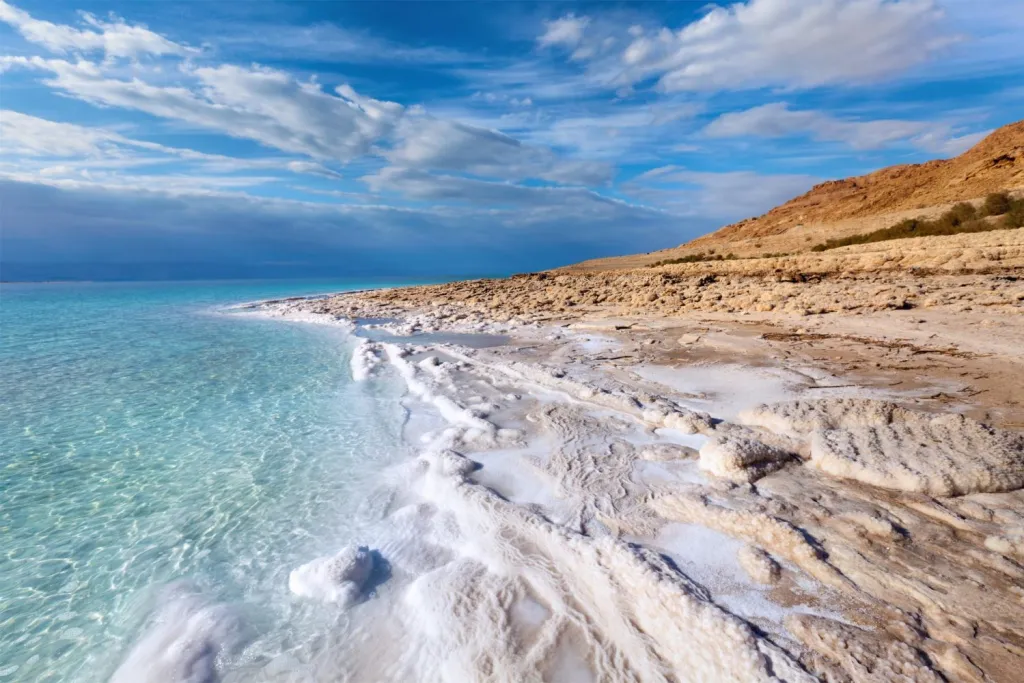
Dead Sea
The Dead Sea area is one of the most distinctive regions in Jordan, renowned for being the saltiest sea in the world and the lowest point on Earth’s surface. The Dead Sea is a unique location for relaxation and rejuvenation, where visitors can float on its blue surface and enjoy the therapeutic benefits of its mud for the skin. Luxurious resorts are available in the area, providing visitors with an unparalleled relaxation experience, along with stunning views overlooking the Dead Sea and the surrounding mountains of Jordan.
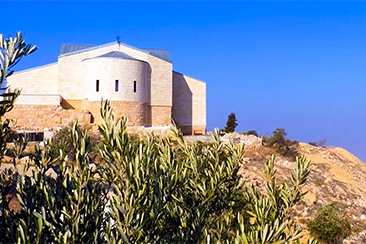
Mount Nebo
Mount Nebo is an important historical site located in Jordan, considered a sacred place in many celestial religions, including Christianity, Judaism, and Islam. The mountain is believed to be the place where the Prophet Moses saw the Promised Land before his death. Mount Nebo offers breathtaking views of the Jordan Valley and the Gulf of Aqaba, in addition to archaeological sites and landmarks such as the Byzantine Church of Moses.
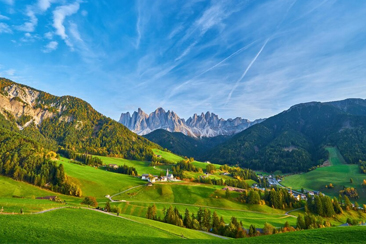
Dana Reserve
Dana Reserve is a charming natural reserve located in Jordan, considered one of the kingdom’s most important natural sites. The reserve features a unique ecological diversity, with forests of pine and oak interspersed with green valleys and flowing springs. The reserve is also home to a large number of wild animals and birds, making it an ideal destination for nature lovers, hiking enthusiasts, and long-distance walkers.
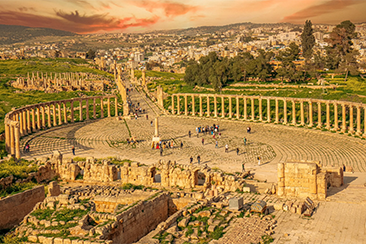
Jerash
Jerash is an important archaeological site in Jordan, housing magnificent Roman ruins. The ancient Roman city of Gerasa, located in Jerash, is one of the best examples of Roman architecture in the Middle East. Visitors can explore massive Roman theaters, ancient temples, paved streets, and old markets, as well as wander through the maze of ancient buildings and enjoy watching the beautiful Roman stone inscriptions and fountains.

Kerak Castle
Karak Castle is a majestic historical fortress located in the city of Karak in Jordan, considered one of the most important tourist and historical landmarks in the region. The castle is famous for its rich history that spans thousands of years, and its sturdy architecture reflects ancient Islamic military architecture. Visitors can explore the castle’s massive walls, towers, and halls, and enjoy stunning views of the city and the surrounding natural landscapes from the top of the towers.
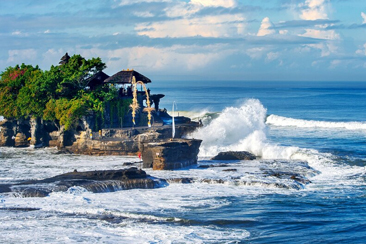
The Baptismal Site
Al-Maghtas, officially known as Baptism Site “Bethany Beyond the Jordan”, is an archaeological World Heritage Site in Jordan, on the east bank of the Jordan River, reputed to be the original location of the Baptism of Jesus by John the Baptist and venerated as such since at least the Byzantine period.
A Journey Through Jordanian Cuisine: Exploring the Flavors of the Middle East
One of the most exciting aspects of any trip to this beautiful country is its incredible food. Jordanian cuisine, a melting pot of flavors from the Middle East, reflects its rich history, cultural influences, and the warmth of its people. In this blog, we’ll dive into Jordan’s delightful food story, exploring fascinating facts about the dishes that define the country’s culinary identity.
The Heart of Jordanian Cuisine
Jordanian food is often described as simple yet full of flavor, made with fresh, locally sourced ingredients.
The country’s cuisine is deeply rooted in its Bedouin traditions, influenced by Arab, Mediterranean, and even Ottoman flavors. The food tells the story of Jordan’s history, its geography, and the generosity of its people. With a heavy emphasis on fresh vegetables, grains, yogurt, and meats, Jordanian dishes are wholesome and comforting.
Here are some fascinating facts about the food in Jordan that will make your next meal there even more enjoyable!
One of the first things you’ll notice when dining in Jordan is the concept of mezze. Mezze refers to a variety of small, flavorful dishes served at the beginning of a meal, similar to appetizers but often taking center stage. It’s a social and communal way of eating, where families and friends gather around the table to share and enjoy a variety of flavors.
Common mezze dishes include:
- Hummus : A creamy dip made from chickpeas, tahini, olive oil, garlic, and lemon juice. It’s a staple in every Jordanian home and is often paired with pita bread.
- Mutabbal (Baba Ganoush) : A smoky eggplant dip mixed with tahini, garlic, and lemon juice.
- Fattoush : A refreshing salad made from fresh vegetables, crispy pieces of pita bread, and a tangy lemon dressing.
- Tabbouleh : A parsley and bulgur salad with tomatoes, onions, and a generous drizzle of olive oil and lemon.
- The beauty of mezze lies in the variety. It allows you to taste a wide range of flavors in a single sitting, and each bite offers a glimpse into Jordan’s rich culinary heritage.
No trip to Jordan is complete without trying mansaf, the country’s most famous and beloved dish. Mansaf is a dish with deep cultural significance and is often served during special occasions, holidays, and celebrations. It’s the perfect blend of tender lamb, yogurt sauce (called jameed), and fragrant rice.
The dish is traditionally served on a large platter, where rice is topped with pieces of lamb and drenched in a rich, tangy yogurt sauce. It’s common to eat mansaf with your hands, and it’s usually accompanied by a fresh, light salad to balance the richness of the dish. The experience of sharing mansaf with others is a testament to Jordanian hospitality and the importance of family and community.
Fun Fact: Mansaf has earned a spot in UNESCO’s Intangible Cultural Heritage list, highlighting its significance to Jordanian culture and identity.
Another fascinating aspect of Jordanian cuisine is zarb, a traditional Bedouin dish that dates back thousands of years. Zarb is a type of slow-cooked meat and vegetable stew that’s prepared by cooking meat, typically lamb or chicken, in an underground pit. This cooking technique uses hot coals to cook the ingredients for several hours, resulting in tender, flavorful meat with smoky, earthy notes.
The dish is often served with rice, and the vegetables used are typically seasonal and locally grown. Zarb is usually made in large quantities and enjoyed by families and groups, making it a great way to experience the communal aspect of Jordanian food.
When it comes to street food, Jordan has two iconic dishes that you’ll find in abundance on every corner: falafel and shawarma. These two dishes have become popular not just in Jordan, but across the entire Middle East.
Falafel : These deep-fried balls of ground chickpeas (or fava beans) and spices are crispy on the outside and soft on the inside. Typically served in pita bread with fresh vegetables and tahini sauce, falafel is a quick and satisfying meal that’s enjoyed by both vegetarians and meat-eaters alike.
Shawarma : A beloved Middle Eastern sandwich made with marinated meat (usually lamb, chicken, or beef) that’s cooked on a vertical rotisserie and shaved thin. The meat is then placed in a warm pita or flatbread, topped with vegetables and a drizzle of garlic sauce. Shawarma is a perfect on-the-go meal and is often enjoyed late into the night by locals.
Jordanian cuisine is as sweet as it is savory, with an array of decadent desserts that have been passed down through generations.
Knafeh is one of the most famous Jordanian sweets, a delicious pastry made from shredded phyllo dough, soaked in sugar syrup, and filled with soft cheese or semolina. The result is a perfect balance of crunchy, gooey, and sweet.
Other beloved Jordanian desserts include:
Baklava : A rich, flaky pastry filled with chopped nuts and sweetened with honey or syrup.
Atayef : Small stuffed pancakes typically filled with sweet cheese, nuts, or cream, often enjoyed during Ramadan.
Ma’amoul : Date-filled cookies that are typically served during holidays and celebrations.
These sweets are often enjoyed with a cup of strong Jordanian coffee or tea, making for a perfect end to a delicious meal.
One of the standout ingredients in Jordanian cuisine is olive oil. The country’s Mediterranean climate is perfect for olive cultivation, and Jordan produces some of the finest olive oil in the region. Olive oil is used in nearly every dish, from salads to stews to dips, adding richness and flavor to meals.
Jordanian olive oil is often considered one of the healthiest in the world due to its purity and minimal processing. It’s also known for its bold flavor, which varies depending on the region it’s produced in.
Fun Fact: Olive oil is not just a cooking ingredient in Jordan but also an important part of social rituals. It’s customary to offer guests a small dish of olive oil to dip their bread in when they arrive at a home.
About Jordan Visa Information
Planning a trip to Jordan? Whether you’re excited to explore the ancient city of Petra, relax by the shores of the Dead Sea, or adventure in the stunning Wadi Rum desert, one of the first things you need to consider is the Jordan visa. Understanding visa requirements before you travel will help ensure a smooth entry and avoid any last-minute stress. In this blog, we’ll guide you through everything you need to know about Jordan visa information, including types of visas, who needs them, and how to apply.
Your passport needs to be valid for a minimum of 6 months beyond the length of your tour when traveling.
Unrestricted nationals can obtain the entry visa to Jordan upon arrival except at the King Hussein Bridge. The single entry visa is valid for 28 days and costs 40 Jordanian Dinar, about 60 USD per person.
Citizens of several countries are eligible for visa-free entry into Jordan for stays ranging from 1 to 3 months, depending on their nationality. These countries typically include:
- Gulf Cooperation Council (GCC) Countries: Saudi Arabia, UAE, Bahrain, Kuwait, Qatar, Oman
- Arab Countries: Iraq, Palestine, Egypt, Lebanon, Syria, etc.
Make sure to check if your country is listed among the visa-exempt nations before your trip.
For citizens of many other countries, Jordan offers the convenience of visa on arrival at various entry points, such as Queen Alia International Airport, and the Red Sea port of Aqaba. This means you can get your visa upon landing in Jordan without needing to apply in advance.
Some countries eligible for visa-on-arrival include:
- European Union member states
- United Kingdom.
- United States
- Canada
- Australia
- New Zealand
In some cases, travelers from specific countries will need to apply for a visa before arriving in Jordan. Nationals of these countries are not eligible for visa on arrival and must apply at the nearest Jordanian embassy or consulate. It’s important to check the visa policy of Jordan for your specific nationality.
Restricted Nationality
- Asia :
Philippines, Vietnam, Yemen, Mongolia, Myanmar, Nepal, Pakistan, Afghanistan, Bangladesh, Cambodia, Iran, Iraq.
- America :
Belize, Cuba
- Africa :
Ethiopia, Eritrea, Gabon, Gambia, Ghana, Guinea, Guinea-Bissau, Liberia, Libya, Madagascar, Mali, Mauritania, Mozambique, Namibia, Niger, Nigeria, Somalia, Sudan, Tanzania, Togo, Uganda, Zaire, Zambia.
You have the option to Apply for the E-Visa before arrival to Jordan through the official website for the Ministry of Interior and you can check all kinds of Visa through this link Visa E Applications – Ministry of Interior.
If you are traveling with a tour group, your tour operator may apply for a group visa on your behalf. Group visas are typically for organized tours and can make the visa process much easier for larger groups of travelers.
While Jordan is predominantly a Muslim country, it has a significant Christian population, primarily of Orthodox and Catholic denominations. As a result, Christmas is widely celebrated, especially in areas with larger Christian communities like Madaba, Karak, and parts of Amman. The holiday season brings people together in a spirit of goodwill, and the celebrations are filled religious and traditions.
Celebrating Christmas in Wadi Rum offers a unique and unforgettable experience, combining the festive spirit with the breathtaking beauty of Jordan’s desert landscape. Known for its dramatic sandstone mountains, vast sandy plains, and star-filled skies, Wadi Rum provides a tranquil, almost mystical backdrop for Christmas celebrations.
The experience typically begins with a festive atmosphere created by local Bedouins, who might decorate traditional tents with simple but charming holiday touches. Guests can enjoy a Christmas dinner prepared with local flavors, such as roasted meats, traditional Jordanian dishes like mansaf (a lamb and rice dish), and fresh, seasonal fruits, in addition of watching the countdown for the new year, and fireworks in the bright winter night sky, around the warmth of a campfire with a glass of wine.
While it may not be a typical Western Christmas, the warmth of Bedouin hospitality brings a different kind of festive cheer, blending local culture with international traditions.
Madaba, a historic town in central Jordan, is renowned for its ancient mosaics, particularly the famous 6th-century mosaic map of Jerusalem and the Holy Land, located in St. George’s Church. The town offers a unique blend of history, culture, and religion, making it a popular destination for travelers interested in exploring Jordan’s Christian heritage. In addition to its mosaics, Madaba is known for its charming streets, traditional markets, and proximity to key attractions such as Mount Nebo, where Moses is believed to have viewed the Promised Land. Celebrating Christmas in Madaba is a special experience, with the town’s Christian communities hosting festive services and events in a warm and welcoming atmosphere.
In addition to The midnight Mass is a central part of the religious celebration, and it is a time for the community to come together and reflect on the spiritual meaning of Christmas. For many Jordanians, Christmas is not just a holiday, but a time for renewal and deepening their faith.
In Jordan, a country known for its rich cultural diversity and deep-rooted traditions of coexistence, Muslims extending warm greetings to Christians on Christmas has become a powerful symbol of unity. It is not just a gesture of courtesy, but a reflection of the country’s commitment to interfaith harmony.
The practice of Muslims congratulating Christians on Christmas is widespread, with local communities coming together to celebrate the holiday spirit. Whether it’s through personal messages, social media posts, or even public gatherings, Muslims in Jordan often express joy and goodwill, emphasizing values of peace, love, and respect. This act, rooted in the teachings of Islam, highlights the importance of tolerance and understanding across religious lines.
The Jordanian monarchy also plays a key role in promoting these peaceful relations, with King Abdullah II frequently speaking out about the need for religious harmony in the region. His leadership encourages both Muslims and Christians to join hands in promoting coexistence, making Jordan a model of interfaith respect in the Middle East.
Experience Ramadan in Jordan: A Unique Cultural Journey
Ramadan in Jordan is a deeply significant and spiritually enriching time for both individuals and communities. As the holy month of fasting in the Islamic calendar, Ramadan holds a special place in the hearts of Jordanians, who observe it with devotion, prayer, and reflection.
During this month, Muslims fast from dawn until sunset, refraining from food, drink, and other physical needs. The evenings are marked by festive gatherings, where families and friends come together to break their fast with the traditional iftar meal, often enjoyed with an array of delicious Jordanian dishes.
The atmosphere in Jordan during Ramadan is uniquely vibrant and communal. Streets and homes are illuminated with lights, and the sound of the adhan (call to prayer) resonates throughout the cities, signaling the time for breaking the fast. Markets come alive with the scent of fresh food, dates, and sweets, while local mosques host special tarawih prayers.
For many Jordanians, Ramadan is not only a time for fasting but also a time for spiritual growth, charity, and strengthening bonds with family and the community. The sense of togetherness and generosity is palpable as people often engage in acts of charity and visit relatives, making it a month filled with compassion and unity.
Traveling to Jordan during Ramadan is nothing to worry about. In fact it is a wonderful time to experience Jordan in Ramadan and much easier than what people expect. There is no expectation or legal requirement for visitors to fast. So relax, Arabs are very generous and understanding people. You can still visit tourist attractions, which are less crowded.
There are some special things you only experiment in Ramadan. At night streets are filled with people, you can go out at midnight without any fear or worry. Streets are decorated with moon lamps, a symbol of Ramadan because it starts and ends when we see the crescent moon. Ramadan has its own atmosphere that always reminds you with it.
During Ramadan, Jordan’s cities come alive with a special energy. As the sun sets, locals prepare for the Iftar, the meal that breaks the fast. The streets are filled with aromas of delicious Arabic dishes like mansaf (lamb and rice), maqluba (upside-down rice), and freshly baked qatayef (sweet stuffed pancakes). In every corner of the capital, Amman, the celebrations take on a festive tone, with lanterns lighting up the streets and special events filling the nights.
Food plays a pivotal role in Ramadan, and Jordan’s culinary offerings are a treat for any traveler. Local dishes are prepared with love, showcasing the country’s rich history and flavors. A must-try during Ramadan is iftar (the meal to break the fast), which usually includes a variety of appetizers, such as hummus, tabbouleh, and fattoush, followed by heartwarming stews, meats, and bread. For dessert, kunafa, a syrupy pastry made with cheese or nuts, is a favorite.
Visiting local markets like Al-Balad (Down town) in Amman during Ramadan gives tourists a chance to experience the atmosphere of the season. The hustle and bustle of vendors selling dates, fresh juices, and sweets, creates a lively, sensory experience that tourists will treasure.
Ramadan in Jordan is a deeply cultural experience. The sense of community during this month is extraordinary, as friends, families, and neighbors come together for communal prayers and meals. Many mosques, like The King Abdullah I Mosque in Amman, hold special evening prayers known as Taraweeh, which can be a moving experience for visitors who wish to learn about Islamic traditions and rituals.
In Jordan, Ramadan is also about charity and helping those in need. Visitors can join in by supporting local initiatives or donating to causes that benefit those less fortunate. Many Jordanians volunteer to distribute food and necessities to people in poorer areas, reflecting the deeply ingrained values of generosity and kindness.
Although many of the country’s usual entertainment options take a backseat during the day in Ramadan, Jordan’s nightlife comes alive after sunset. Once the fast is broken, the streets bustle with activity, and cafes, restaurants, and shops remain open late into the night. Tourists can stroll through Amman’s famous Rainbow Street, where they’ll find bustling cafés serving Arabic coffee, mint tea, and shisha (hookah), all while soaking in the atmosphere of Ramadan nights.
Moreover, Ramadan souks (markets) pop up in various parts of the country, with handmade goods, traditional clothing, lanterns, spices, and sweets for sale. These markets give tourists the chance to shop for unique souvenirs while immersing themselves in the Ramadan spirit. Visitors can also find special Ramadan decorations and gifts, which are popular among locals during this season.
The final ten days of Ramadan are especially significant in Jordan, and tourists visiting during this period will witness even more intense cultural and religious fervor. The Night of Power (Laylat al-Qadr) falls within these days and is considered one of the most sacred nights of the Islamic calendar. It’s a night of prayer, reflection, and seeking blessings.
The end of Ramadan is marked by Eid al-Fitr, a grand celebration that brings the entire country together. In the days leading up to Eid, Amman and other cities are filled with colorful lights, and people wear their finest clothes to celebrate with family and friends. On Eid morning, large gatherings take place in mosques for the special Eid prayer, followed by a day filled with feasting, gifting, and visiting loved ones. The streets are alive with people sharing food, playing music, and exchanging warm wishes. For tourists, Eid is a wonderful time to witness Jordan’s joy and hospitality at its finest.
- Dress modestly: While Jordan is a relatively liberal country, it’s important to dress conservatively during Ramadan, particularly when visiting religious sites.
- Be mindful of fasting hours: It’s respectful not to eat, drink, or smoke in public places during the daylight hours, as many Jordanians are fasting.
- Embrace the hospitality: Jordanians are known for their hospitality, and during Ramadan, you may be invited to share a meal with locals. It’s a wonderful opportunity to connect with the culture.
- Plan your timing: Many restaurants and shops operate on adjusted hours during Ramadan, so it’s best to check timings in advance.
- Alcohol : its prohibited to sell during Ramadan time in all markets also liquor stores are totally closed, however you can drink it in the 5 stars hotel bar only.
Where to Stay in Wadi Rum
There are several options for accommodation, ranging from basic camps to more luxurious desert resorts. Staying in a Bedouin-style camp is one of the highlights of a trip to Wadi Rum, as it allows you to experience the desert life firsthand.
Many Bedouin families in Wadi Rum operate traditional camps, offering the chance to sleep in comfortable tents under the stars. These camps typically provide meals, tea, and even live music around the campfire. Some of the most popular camps include:
For those looking for a bit more comfort, eco-resorts like Sun City Camp provide an experience that blends luxury with sustainability, offering upgraded tents with en-suite bathrooms, a restaurant, and various desert activities.
If you’re more of an adventurous traveler, you can opt to camp in the open desert with a local guide. You’ll be provided with the essentials for a true wilderness experience, including a tent and food, but keep in mind the weather conditions.
Activities in Wadi Rum: What to Do
Wadi Rum is a paradise for outdoor enthusiasts and adventure seekers. Whether you’re into hiking, photography, or cultural experiences, there’s something for everyone. Here are some activities you should consider when visiting:
The most popular way to explore Wadi Rum is by taking a jeep tour. Local guides will take you on an unforgettable ride through the desert, stopping at key points of interest. Some famous stops include:
- Lawrence’s Spring – A natural spring named after T.E. Lawrence (Lawrence of Arabia).
- The Seven Pillars of Wisdom – A famous rock formation named after T.E. Lawrence’s book.
- Khazali Canyon – Known for its ancient petroglyphs and inscriptions.
You can opt for half-day, full-day, or even multi-day tours. Make sure to book your jeep ride through a reputable local guide or your camp.
For those who prefer to explore on foot, Wadi Rum offers several hiking trails. The area around Jebel Rum and Jebel Um Ishrin is perfect for more challenging hikes, providing stunning views of the desert landscape and the surrounding mountains. Some hikes take a few hours, while others can last an entire day.
Wadi Rum is famous for its dramatic sandstone mountains, making it one of the best rock-climbing destinations in the world. Whether you’re a beginner or an experienced climber, you’ll find suitable routes in the area. Local guides are available to help you with equipment and offer training for beginners.
Wadi Rum’s remote location, away from city lights, makes it one of the best places in the world for stargazing. The clear desert skies allow for spectacular views of the Milky Way, constellations, and meteor showers. Many camps provide stargazing sessions in the evenings.
A camel ride through the desert is a classic experience in Wadi Rum. It’s a slower-paced way to take in the beauty of the landscape and provides a glimpse into the traditional Bedouin way of life.
Learning about the Bedouin culture is one of the highlights of a visit to Wadi Rum. You can interact with the locals, sample traditional Bedouin cuisine like Zarb (a lamb or Chicken cocked underground sand big hall for a several hours), and listen to stories about their lives in the desert.
Essential Tips for Visiting Wadi Rum
- Dress appropriately: Wear lightweight, breathable clothing, but also bring a jacket or sweater for chilly evenings. Sturdy shoes or boots are recommended for hiking and trekking.
- Bring sunscreen and water: The desert sun is intense, so sunscreen and plenty of water are essential to stay hydrated and protected.
- Respect the environment: Wadi Rum is a protected area, so be mindful of the environment. Stay on marked paths, do not disturb wildlife, and dispose of your waste properly.
- Book tours in advance: To ensure you get the experience you want, especially during peak tourist seasons, it’s a good idea to book tours and accommodation in advance.
Conclusion: Wadi Rum, a Journey into the Heart of the Desert
Wadi Rum is an extraordinary place that offers an unforgettable desert experience. Whether you’re seeking adventure, serenity, or cultural immersion, this UNESCO World Heritage Site is sure to leave you with lasting memories. With the right preparation and knowledge, your visit to Wadi Rum will be a thrilling journey into the heart of one of the world’s most beautiful desert landscapes.
So pack your bags, get ready for an adventure, and let Wadi Rum’s timeless beauty captivate your soul!
Guide to Visiting Wadi Rum The Valley of the Moon
Wadi Rum, often referred to as the “Valley of the Moon,” is one of Jordan’s most awe-inspiring natural wonders. This vast desert landscape, with its striking sandstone mountains, ancient petroglyphs, and endless golden dunes, is a must-visit destination for anyone seeking adventure, history, and breathtaking views. Whether you’re a seasoned traveler or someone planning your first desert adventure, this practical guide will help you make the most of your visit to Wadi Rum.
Getting There: How to Reach Wadi Rum
Wadi Rum is located in southern Jordan, about 60 kilometers (37 miles) from the Red Sea city of Aqaba. There are several ways to reach Wadi Rum, depending on where you’re starting your journey:
The most flexible way to reach Wadi Rum is by car. If you’re traveling from Amman, it takes approximately 4 hours to drive south to Wadi Rum. The road is well-paved and easy to follow. From Aqaba, it’s just an hour’s drive. You can either rent a car or hire a private taxi to get to the Visitor Center in Wadi Rum village, where most tours start.
Public buses also connect Amman to Wadi Rum, though they are less frequent and can be less convenient than driving. The JETT bus service operates routes between Amman and Aqaba, where you can catch a taxi to Wadi Rum.
Many tour companies offer day trips to Wadi Rum from Aqaba or Amman. These tours often include transportation, a guided jeep ride in the desert, and sometimes meals and overnight camping.
Best Time to Visit Wadi Rum
The desert climate of Wadi Rum means it can get extremely hot during the summer months (June to August), with temperatures soaring above 40°C (104°F). The best time to visit is in the cooler months, from March to May and September to November. During these months, temperatures are more moderate, making outdoor activities much more comfortable.
In winter (December to February), temperatures can drop significantly, especially at night, so be prepared for cold evenings and mornings if you plan to visit then.
Is Jordan Safe to Travel in 2025 ?
Are you contemplating a trip to Jordan in 2024, yet find yourself wondering about the region’s current safety status? If your travel plans include Jordan, you might naturally be concerned about how the situation in Israel and Gaza could potentially influence Jordan’s safety and whether it’s advisable to proceed with your travel plans.
The straightforward answer is, yes, it is currently safe to travel to Jordan. This article aims to shed light on why Jordan remains a safe haven for tourists, despite the recent turmoil in neighboring Israel and Gaza.
Jordan is considered one of the safest countries in the Middle East. Over the past few decades, the country has maintained political stability, relative security, and a welcoming atmosphere for tourists. Despite being situated in a region often associated with conflict, Jordan has largely avoided the political unrest that has affected some of its neighbors. This stability is one of the key factors that contribute to its reputation as a safe destination.
Jordan is also home to a robust tourism infrastructure, with a wide range of hotels, resorts, and travel services that cater to international visitors. The country has developed a strong reputation for hospitality, with Jordanians known for their warmth and friendliness toward tourists.
Jordan is a constitutional monarchy with a long history of stable governance under the leadership of King Abdullah II. The country has not experienced significant political upheaval in recent years, and the government has taken steps to ensure both internal stability and strong diplomatic relations with its neighbors.
Jordan shares borders with Israel, Palestine, Syria, Iraq, and Saudi Arabia, all of which have had varying degrees of political tension and conflict. However, Jordan has managed to maintain its neutrality and peace, which has contributed significantly to its safe reputation. The Jordanian government has invested heavily in maintaining internal order and preventing any spillover effects from regional instability.
Jordan has developed a solid tourism infrastructure, which is another reason it remains a popular destination for international travelers. Major tourist sites such as Petra, Wadi Rum, the Dead Sea, and the ancient city of Jerash are well-served by local transportation, guides, and security personnel. There are also frequent flights connecting Jordan to major international hubs, making it easy to travel to and from the country.
The government has made significant strides in ensuring that tourists have access to reliable health and emergency services. There are well-established hospitals and clinics, especially in larger cities like Amman and Aqaba, where international travelers can receive medical care if needed.
In terms of physical safety, Jordan remains one of the safest countries for tourists in the region. Violent crime rates are relatively low, especially when compared to other parts of the Middle East. Petty theft can occasionally occur, as in any tourist destination, but it is not widespread. The Jordanian police are generally efficient, and the presence of security personnel at key tourist sites adds an extra layer of reassurance.
That being said, as with traveling to any country, it’s always a good idea to exercise basic travel caution. Keep your valuables secure, avoid isolated areas after dark, and follow any advice or guidelines given by local authorities and tour guides.
One of the most common concerns for travelers heading to the Middle East is regional security, especially with the ongoing conflicts in Syria and Iraq. However, Jordan’s government has implemented strict security measures to protect both locals and visitors. The Jordanian military and police are vigilant at border crossings, airports, and other high-traffic areas.
Although Jordan shares borders with conflict zones, the country has effectively contained potential risks from its neighbors. Popular tourist sites such as Petra, the Dead Sea, and Aqaba are well protected, and there have been no major incidents involving foreign tourists in recent years. That said, it is always advisable to stay updated on current events and heed any travel advisories issued by your home country’s government.
As of 2025, Jordan is expected to maintain its commitment to health and safety, with a strong healthcare system that provides both modern and emergency services. In recent years, Jordan has also made significant strides in improving public health and safety, particularly during the COVID-19 pandemic. The country implemented stringent measures to control the spread of the virus, and this experience has improved its preparedness for any future health crises.
The country’s tap water is generally considered safe to drink in most urban areas, though some visitors might prefer to drink bottled water, especially in rural regions. Food and hygiene standards in Jordan are high, and food-related illnesses are rare for tourists who eat at reputable restaurants or from licensed food vendors.
Jordan is a predominantly Muslim country, cultural sensitivity is always important. Visitors should dress modestly, especially when visiting religious sites or rural areas. Women, in particular, may want to wear clothing that covers their shoulders and knees, though the dress code in larger cities like Amman is more relaxed.
Jordan is also known for its hospitality, and tourists often find that locals go out of their way to make visitors feel welcome. Learning a few key phrases in Arabic, such as “hello” (Ahlan) and “thank you” (Shukran), can go a long way in building rapport with Jordanians and showing respect for their culture.
In summary, if Jordan is on your travel agenda, feel confident in proceeding with your plans. Just be sure to secure travel insurance and prepare appropriate attire for the climate, looking forward to an enriching experience in this safe, hospitable, and culturally rich country.
Jordan Pass: A Complete Guide to Save Money and Time
If you’re planning a trip to Jordan, the Jordan Pass is an essential travel companion that can help you experience the country’s rich history, culture, and natural beauty, all while saving you time and money. Whether you’re visiting ancient ruins, exploring the desert, or wandering through vibrant cities, the Jordan Pass offers incredible value for tourists. In this blog, we’ll dive into everything you need to know about the Jordan Pass, from what it includes to how it works, so you can make the most of your Jordanian adventure.
What is the Jordan Pass?
The Jordan Pass is a special electronic pass designed for tourists, offering access to over 40 attractions across Jordan at a discounted rate. It’s essentially a one-stop ticket for exploring Jordan’s most iconic landmarks, including Petra, Wadi Rum, Jerash and many more.
With the Jordan Pass, you don’t just save on entry fees, you also skip the hassle of purchasing individual tickets for each site, making your trip smoother and more convenient.
What Does the Jordan Pass Include?
The Jordan Pass offers three different packages to cater to varying travel preferences and budgets: Jordan Pass, Jordan Explorer Pass, and Jordan Wanderer Pass. All packages cover entry to major attractions, but the inclusions and prices vary slightly depending on the pass you choose.
- Entry to Petra: One of the highlights of any Jordan trip, Petra is a must-see ancient city and UNESCO World Heritage site. The Jordan Pass covers your entry to Petra, allowing you to explore this incredible “Rose City” at your own pace.
- Entry to over 40 other attractions: This includes famous landmarks like Wadi Rum, Amman Citadel, and Jerash, some of Jordan’s most culturally rich and historical sites.
- Visa Fees Waiver: The Jordan Pass also waives the visa fee for Jordan for non-restricted nationality (normally 40 JD) if you stay in the country for at least three nights, making it an excellent option for international visitors.
Benefits of The Jordan Pass
One of the most compelling reasons to buy the Jordan Pass is the potential savings. Without the pass, entry fees for major attractions like Petra can add up quickly. For instance, entry to Petra can cost around 50 JD for one day or 55 JD for two days, but with the Jordan Pass, you get entry to Petra included, as well as discounts on other attractions.
The Jordan Pass allows you to pay one upfront price and gain access to all the included sites, which can save you significant amounts in the long run. The price of the Jordan Pass varies depending on how long you plan to stay in Petra (1-day or 2-day entry), but overall, it provides great value for those looking to explore Jordan’s most iconic sites.
With the Jordan Pass, you can bypass ticket lines at the major sites, which can sometimes be long, especially during peak tourist seasons. This not only saves you time but also adds convenience, allowing you to focus on exploring the attractions rather than waiting in line.
Purchasing a Jordan Pass is an incredibly convenient way to plan your visit to Jordan. You can buy it online before your trip or upon arrival, and it provides digital access, so you don’t have to worry about carrying paper tickets. The pass is valid for up to 30 days, which gives you plenty of flexibility to explore at your own pace.
How to Use the Jordan Pass
Important Tips for Using the Jordan Pass
- Plan Your Itinerary: Since the Jordan Pass covers a wide range of attractions, it’s important to plan your itinerary carefully to make the most of the pass. Some sites are located in more remote areas, so you’ll need to arrange transport accordingly.
- Check the Validity: The Jordan Pass is valid for 30 days from the first use, so make sure your trip aligns with this time frame to get the most value.
- Make the Most of the Visa Waiver: If you’re entering Jordan via a land border, make sure you stay for at least 3 nights to benefit from the visa fee waiver.
Where to Buy the Jordan Pass
You can buy the Jordan Pass through the official Jordan Pass website (Jordan Pass), where you’ll find detailed information on the various packages, prices, and included attractions. The process is simple and fast, with digital delivery available immediately upon purchase.











